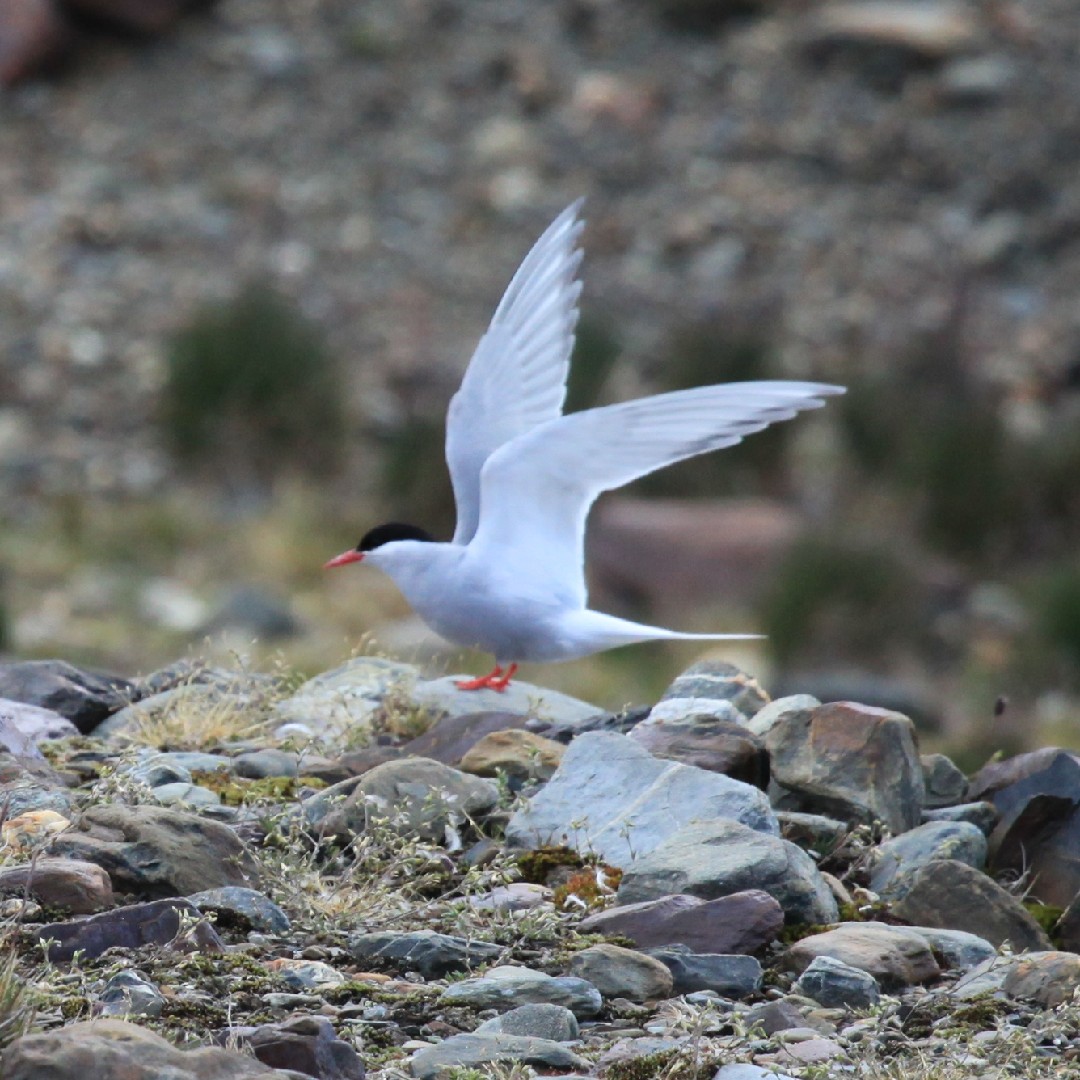Antarctic Tern
A species of Typical Terns Scientific name : Sterna vittata Genus : Typical Terns
Antarctic Tern, A species of Typical Terns
Botanical name: Sterna vittata
Genus: Typical Terns
Content
Description General Info
 Photo By Liam Quinn , used under CC-BY-SA-2.0 /Cropped and compressed from original
Photo By Liam Quinn , used under CC-BY-SA-2.0 /Cropped and compressed from original Description
The Antarctic Tern is a medium-sized tern ranging from 35 to 40 cm in length with a wingspan of 74 to 79 cm. It weighs between 150 and 180 g but it tends to be heavier during the winter months. In breeding plumage, the tern has light grey body and wings. Its deeply forked tail, lower back just above it and cheeks are white. It also has a distinctive black cap that reaches from the nape down to the bill and the eye is brownish-black. The bill, legs and feet are bright red. In non-breeding plumage, the black cap is reduced to just the area behind the eyes, the underparts become lighter and the bill becomes a dull reddish-black colour. Juveniles have yellowish-brown, grey, and white spots on their backs, with a yellowish-brown belly and breast. Their bill is dull black and the legs are dull red. The chicks have a yellowish-brown colour with black spots on their heads and back. They have a greyish white belly with a darker throat. The bill, legs and feet can be flesh colored or reddish black. The Antarctic tern resembles closely to the Arctic tern. However, the local Antarctic Terns are in their breeding plumage when the migrating Arctic Terns arrive in their non-breeding plumage. Arctic terns also have shorter legs and more prominent black margins on the outside of their primary feathers. The white-fronted tern is also quite similar to the Antarctic tern but it can be distinguished by the larger body size, lighter colors, and longer black bill of the white-fronted tern. The different subspecies vary in size and plumage tone but are often hard to distinguish from one another. 
Size
40 cm
Life Expectancy
17 years
Nest Placement
Ground
Feeding Habits
Antarctic Tern primarily consume small fish and crustaceans like Antarctic krill. They forage gregariously, often diving from flight to submerge or dip their bills to catch prey. Antarctic Tern typically feed near shorelines and kelp zones, extending their hunt to intertidal zones for additional crustaceans and polychaetes, especially when nesting.
Habitat
The habitat of antarctic Tern typically includes rocky islets, often in the vicinity of other seabirds. These birds are commonly found nesting on cliffs, as well as gravel and rocky beaches. They may also settle in sparse scrub on certain islands. Post-breeding, antarctic Tern is drawn to Antarctic ice edges and, when not in the high southern latitudes, frequents rocky headlands and beaches in broader temperate regions.
Dite type
Piscivorous
General Info
Feeding Habits
Bird food type
Distribution Area
The Antarctic tern prefers rocky areas such as islets, with or without vegetation, often among other seabird species. It usually nests on cliffs but is also found on rocky beaches, places inaccessible to cats or rats. It also avoids beaches with sea lions, as they tend to occupy all flat areas. Outside of the breeding season, this species of tern looks for ice edges in Antarctica. It also visits South Africa’s beaches and rocky cliffs. This species has a large range, widely distributed around sub-Antarctic islands of the southern hemisphere and the Antarctic mainland. The breeding territory of the Antarctic tern includes Antarctica, Bouvet Island, the French Southern Territories, Saint Helena, Ascension and Tristan da Cunha, South Africa, South Georgia, and the South Sandwich Islands. Recently, some populations have been found to take advantage of newly ice-free terrain on the north-eastern Antarctic Peninsula when nesting. Each subspecies have specific breeding islands. After breeding, the Antarctic tern does not undertake a long migration to the opposite pole like the Arctic tern does. It usually remains close to the breeding islands all year round. However, the more southern populations migrate slightly further north for the rest of the year. They can be found in Uruguay, Argentina, Brazil, Chile, the Falkland Islands, the Heard Island, the McDonald Islands, Australia, and New Zealand. 
Species Status
The IUCN Red List classifies the Antarctic tern as a species of least concern in terms of conservation status. The population is stable and is currently estimated to be between 132,000–145,000 individuals, with about 45,000 breeding pairs. The majority are from the subspecies S. v. gaini. However, reproduction failures have been recorded on certain islands mostly due to introduced mammalian predators, namely domestic cats and rats. 
Scientific Classification
Phylum
Chordates Class
Birds Order
Shorebirds Family
Gulls Genus
Typical Terns Species
Antarctic Tern